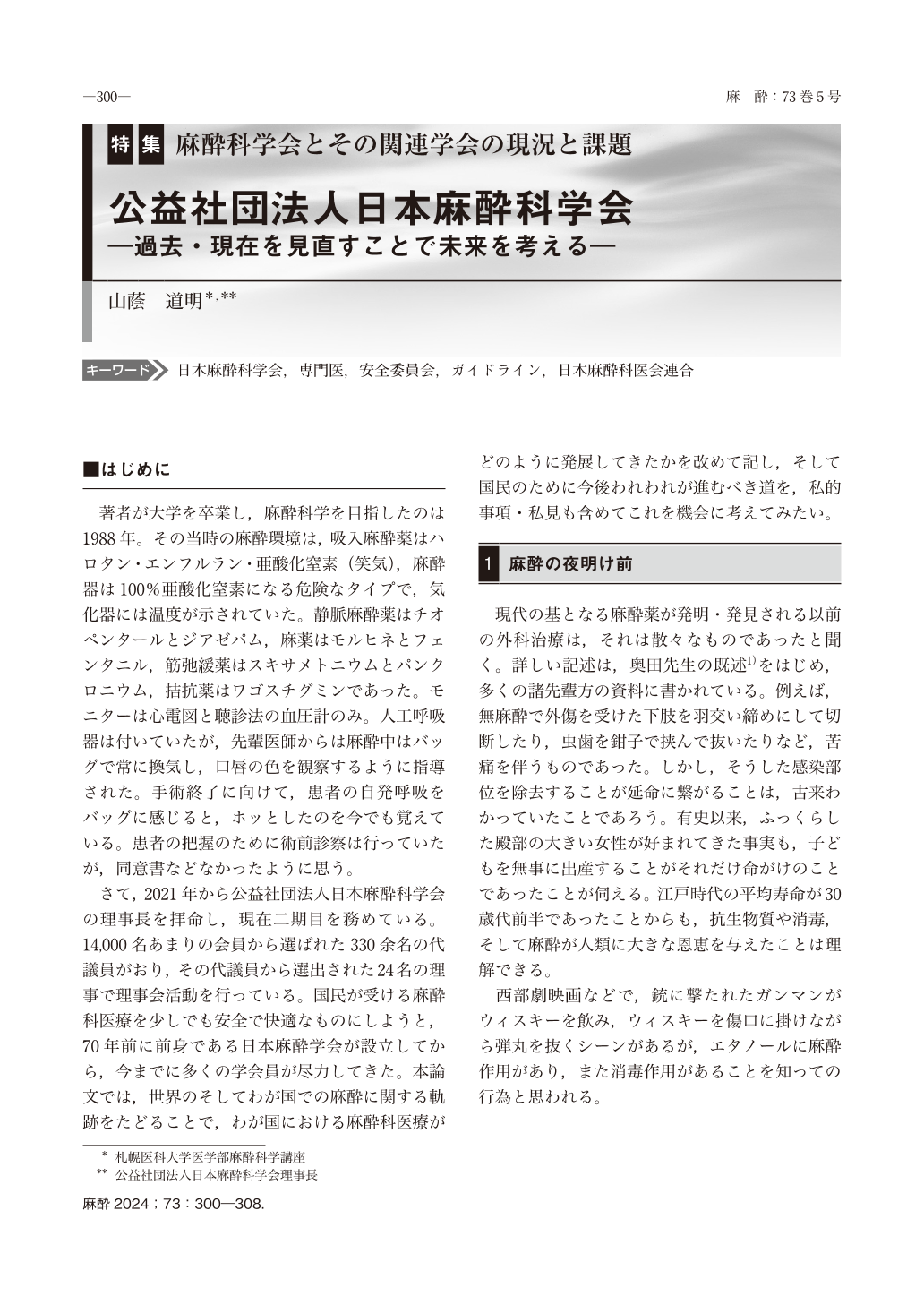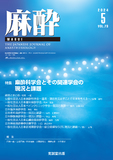Japanese
English
- 有料閲覧
- Abstract 文献概要
- 1ページ目 Look Inside
- 参考文献 Reference
はじめに
著者が大学を卒業し,麻酔科学を目指したのは1988年。その当時の麻酔環境は,吸入麻酔薬はハロタン・エンフルラン・亜酸化窒素(笑気),麻酔器は100%亜酸化窒素になる危険なタイプで,気化器には温度が示されていた。静脈麻酔薬はチオペンタールとジアゼパム,麻薬はモルヒネとフェンタニル,筋弛緩薬はスキサメトニウムとパンクロニウム,拮抗薬はワゴスチグミンであった。モニターは心電図と聴診法の血圧計のみ。人工呼吸器は付いていたが,先輩医師からは麻酔中はバッグで常に換気し,口唇の色を観察するように指導された。手術終了に向けて,患者の自発呼吸をバッグに感じると,ホッとしたのを今でも覚えている。患者の把握のために術前診察は行っていたが,同意書などなかったように思う。
さて,2021年から公益社団法人日本麻酔科学会の理事長を拝命し,現在二期目を務めている。14,000名あまりの会員から選ばれた330余名の代議員がおり,その代議員から選出された24名の理事で理事会活動を行っている。国民が受ける麻酔科医療を少しでも安全で快適なものにしようと,70年前に前身である日本麻酔学会が設立してから,今までに多くの学会員が尽力してきた。本論文では,世界のそしてわが国での麻酔に関する軌跡をたどることで,わが国における麻酔科医療がどのように発展してきたかを改めて記し,そして国民のために今後われわれが進むべき道を,私的事項・私見も含めてこれを機会に考えてみたい。
I decided to become an anesthesiologist in 1988. At that time, the anesthesia environment was more dangerous, as inhalation anesthesia was comprised of halothane, enflurane, and nitrous oxide(laughing gas), and an anesthesia machine could be set at 100% nitrous oxide. The intravenous anesthesia was thiopental and diazepam, the narcotics were morphine and fentanyl, the muscle relaxants were suxamethonium and pancuronium, and the antagonist was neostigmine. The only monitors were electrocardiography and an auscultation sphygmomanometer. Although there was a ventilator with each anesthetic machine, senior physicians instructed me to always ventilate by squeezing the bag during anesthesia and to observe the color of the patient’s lips. I still remember feeling relieved when I felt the patient’s spontaneous breathing in the bag toward the end of each surgery. I had preoperative consultations to understand the patients, but I don’t think there was a consent form.
I have been the president of the Japanese Society of Anesthesiologists(JSA)since 2021 and am currently serving my second term. There are more than 330 delegates selected from among more than 14,000 members, and 24 directors elected by those delegates carry out board activities. Since the establishment 70 years ago of the JSA, which was the predecessor of the Society, many members have made efforts to make the perioperative medical care received by the public as safe and comfortable as possible. In this paper, I would like to rewrite how anesthesiologic medical care in Japan has developed by tracing the trajectory of anesthesia globally and in Japan and to take this opportunity to consider the path we should take for the sake of Japanese citizens, based in part on my own history and opinions.

Copyright © 2024 KOKUSEIDO CO., LTD. All Rights Reserved.


